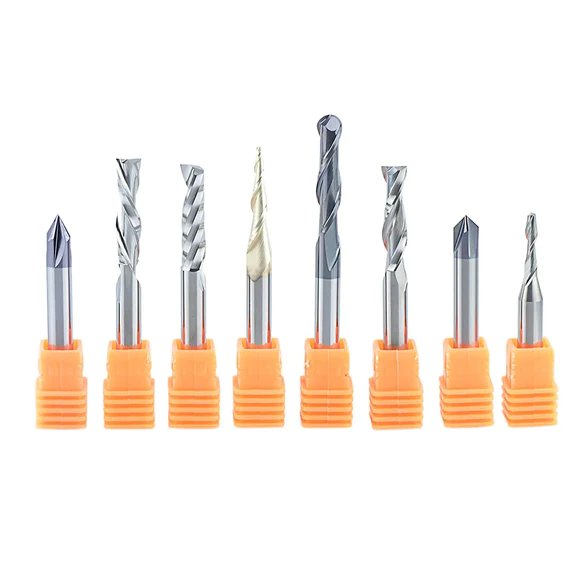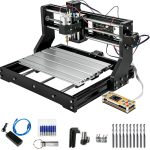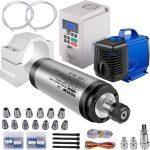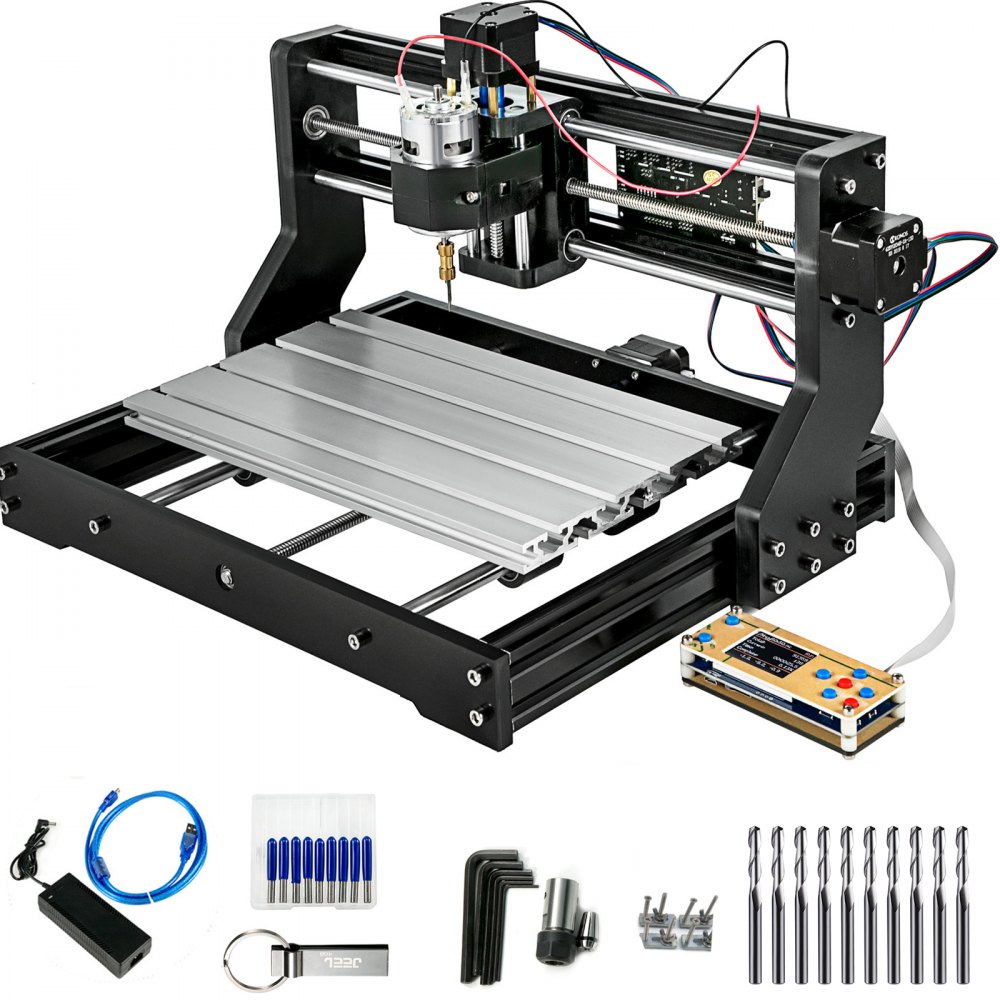Introduction
Small CNC routers, like the 3018, Shapeoko and Longmill, have revolutionized the world of DIY and small-scale manufacturing. These versatile machines are capable of carving intricate designs, milling precise parts, and crafting stunning projects. One of the key factors that determine the success of CNC routing is the choice of end mills, which play a pivotal role in shaping the final product. In this article, we will delve into the world of end mills for small CNC routers, exploring various types, cooling options, materials, and the significance of the number of flutes. By the end, you’ll be equipped with the knowledge needed to optimize your CNC routing experience.
Types of End Mills
- Up-Cut End Mills: Up-cut end mills, as the name suggests, lift the chips and material upwards during the cutting process. These bits are excellent for chip evacuation, preventing heat buildup, and achieving a clean top surface finish. They are suitable for materials like wood, plastic, and soft metals.
- Down-Cut End Mills: Conversely, down-cut end mills push the chips and material down. These bits are ideal for materials that tend to splinter, such as plywood or laminates. They produce a clean top surface, but the bottom surface might require additional finishing.
- Combination (Up/Down Cut) End Mills: Combination end mills combine the features of both up-cut and down-cut end mills. These are versatile and can be used for a wide range of materials, providing an excellent compromise between chip evacuation and surface finish.
Choosing the Right End Mill for the Material
The choice of end mill depends on the material you’re working with:
- Wood: For wood, up-cut end mills are popular due to their efficient chip removal. Down-cut end mills can also be used for a clean top surface, but they might require additional sanding.
- Plastics: Plastics can be sensitive to heat. Up-cut or combination end mills work well, as they prevent the material from melting or warping due to heat buildup.
- Aluminum: Aluminum is a soft metal, and up-cut end mills are often preferred for efficient chip removal. However, down-cut end mills can be used if you need a smooth bottom surface.
- Hardwoods and Exotic Woods: These materials benefit from down-cut or combination end mills to prevent splintering and achieve a clean top surface.
- Composite Materials: Combination end mills are suitable for composite materials like fiberglass or carbon fiber, as they minimize delamination.
Cooling Options
Cooling is crucial to extend tool life and prevent overheating, especially when working with harder materials. Small CNC routers typically employ three cooling methods:
- Air Cooling: This is the most common method and is suitable for most materials. Air cooling uses the airflow generated by the router’s spindle to dissipate heat. It’s simple, cost-effective, and reliable.
- Mist Cooling: Mist cooling systems spray a fine mist of coolant onto the end mill and workpiece, providing better heat dissipation. This method is especially useful for materials like metals, which generate a lot of heat during machining.
- Water Cooling: Water cooling systems circulate chilled water through a spindle or a separate cooling system. This method is efficient for dissipating heat but can be more complex and expensive.
End Mill Materials
End mills are available in various materials, each with its own advantages:
- High-Speed Steel (HSS): HSS end mills are affordable and suitable for softer materials. They are less durable than carbide, making them ideal for occasional use.
- Solid Carbide: Carbide end mills are extremely durable and suitable for a wide range of materials. They are costlier but offer extended tool life.
- Carbide Tipped: These end mills have a carbide cutting edge combined with a less expensive shank. They offer good value for money and a balance between durability and cost.
- Coated End Mills: Coated end mills have a protective coating, often made of titanium nitride (TiN) or similar materials. These coatings enhance tool life and reduce friction, making them suitable for high-speed machining and harder materials.
The Significance of Flute Count
The number of flutes on an end mill affects its performance:
- Single Flute: Single-flute end mills are ideal for removing material quickly. They are suitable for soft materials like wood and plastics but can be less precise.
- Two Flutes: Two-flute end mills are versatile and suitable for various materials. They provide a good balance between material removal and surface finish.
- Three Flutes and More: These end mills are ideal for achieving a smooth surface finish and precision. They are excellent for metals and other hard materials.
Conclusion
Choosing the right end mill for your small CNC router is essential for achieving optimal results. The type of end mill, cooling method, material, and flute count should all be carefully considered based on your project’s requirements. By understanding these factors, you can unlock the full potential of your CNC router and create stunning, precise, and durable products. Experiment with different combinations to find the best fit for your specific needs, and don’t be afraid to explore new techniques as you gain experience in the world of CNC routing.





